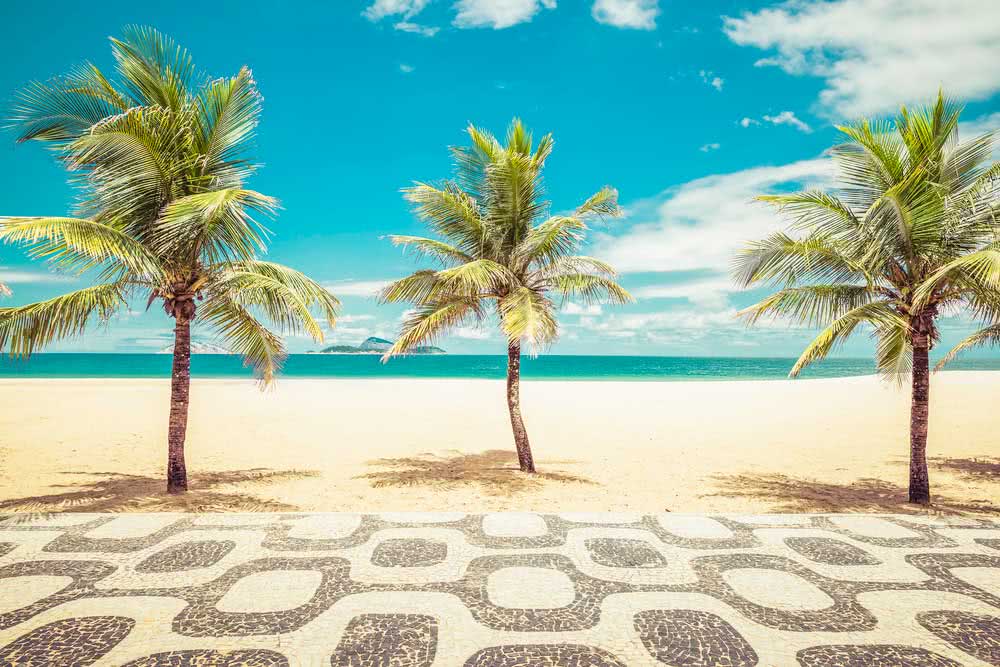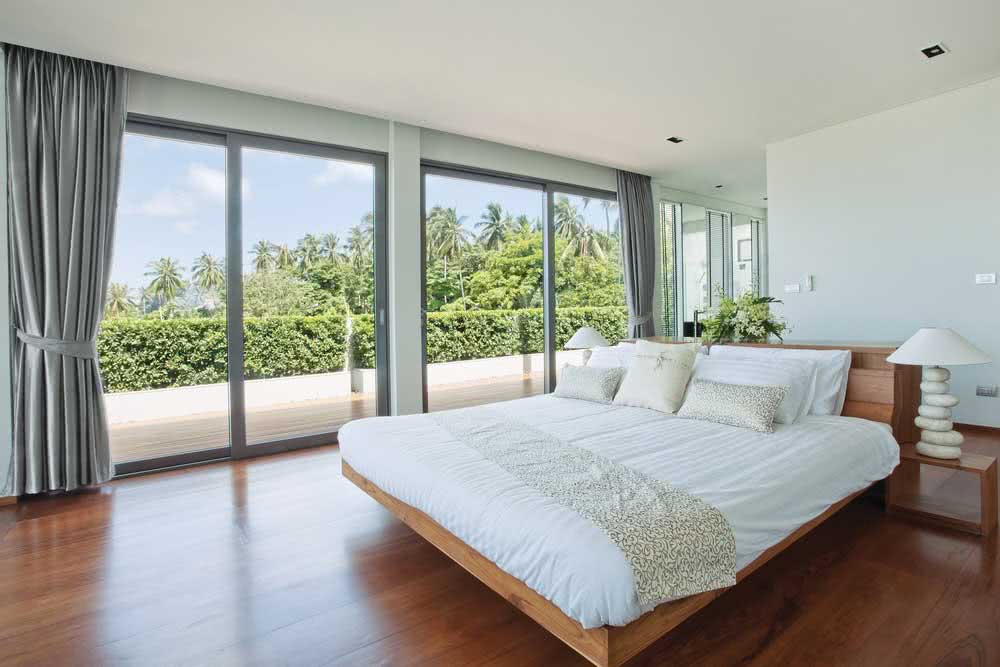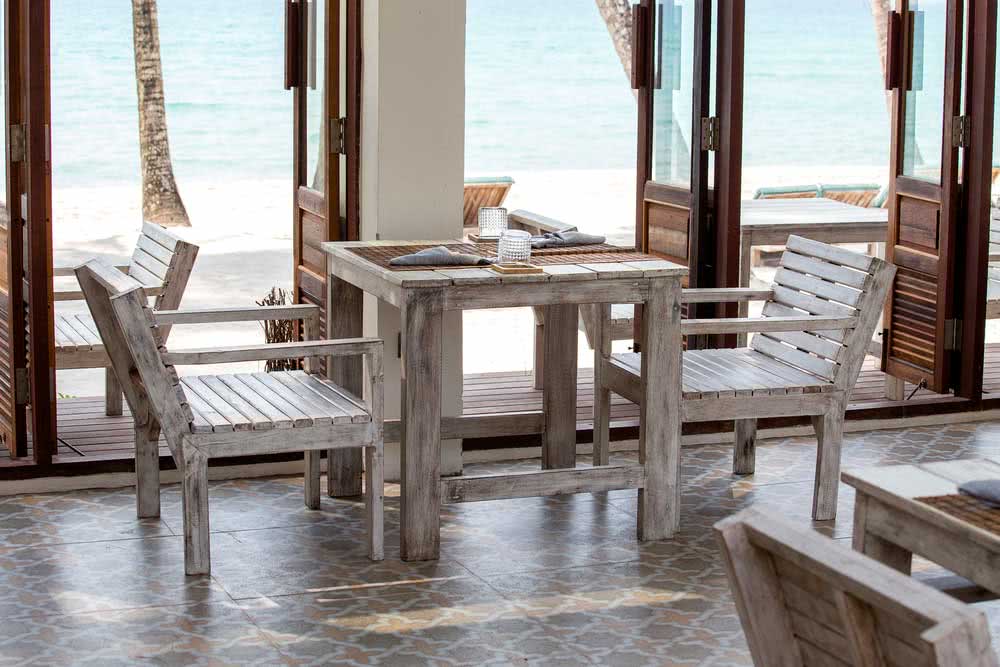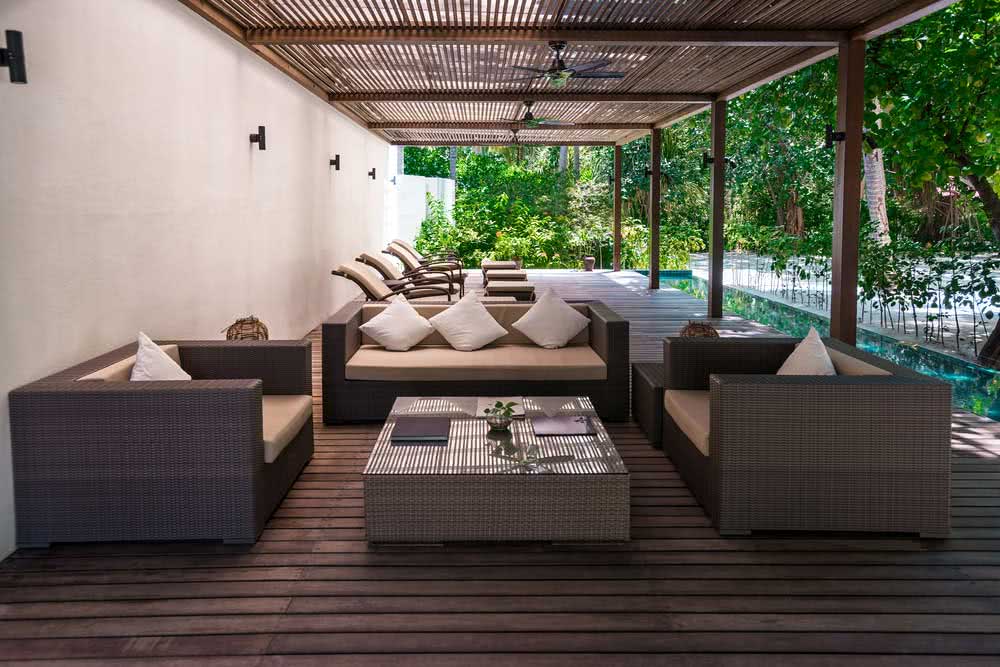Living on the beach is like living on vacation all year! But for everything to be perfect like a summer sunset, it is important to be aware of a fundamental detail: the sea air.
If you are thinking of moving to the coast or just buying a vacation property, already know that this word will accompany you everywhere.
Therefore, nothing better than learning a little more about it and discovering how to live with this particularity of the maritime areas.
What is sea air?

In a simple and summarized way, the sea air is a type of mist of moisture laden with salinity coming directly from the sea.
This mist filled with salt water vapor settles on the surface of objects and, over time, causes the oxidation of materials, especially those most likely to suffer from this characteristic, such as iron, for example.
The heat and high temperatures of the coast contribute even more to the effect of the salt air.
That is why those who live on the beach have nothing else to do but get used to it and adapt to the effects of the salt air.
And that is precisely why we have brought the tips below.
Sea spray protection: materials to use and materials to avoid

As mentioned earlier, some materials are more attacked by the sea than others and getting to know each one better is essential before starting your beach house.
Only so that you don’t have a headache and don’t have to change all your furniture and even doors, windows and other structures in the house, including the floor and roof that ended up being damaged by the sea.
So just take a look at the list below:
Materials to avoid

Iron
Iron is one of the materials that suffer most from oxidation and the coastal sea air contributes even more to the corrosive process of iron.
That is why the recommendation is to avoid using objects made of the material at all costs. This ranges from the use of furniture with feet and iron structures to the nail used on the wall.
It is also worth remembering that hinges and door locks are also susceptible to the action of salt air and if they are made of iron they can put the security of your beach house at risk.
The recommendation in this case is to replace with stainless steel or chrome steel hinges and locks.
Permeable fabrics
Avoid using fabrics that easily absorb moisture, especially in the case of upholstery.
This type of fabric allows the sea air to penetrate and end up damaging the inside of the sofa.
The same recommendation applies to carpets, curtains and pillows. The more waterproof the fabric is, the better.
Glossy ceramics
In general, ceramics are welcome in beach houses and resist the salt air very well.
The problem, in this case, is not in the material, but in the type of finish.
Floors with a glossy effect, of the enameled or polished type, quickly lose their finish and, therefore, resistance and durability.
So, avoid them.
Most suitable materials

wood
Wood can and should be used in beach houses, since the material is resistant to salt spray.
But don’t get too excited (yet). That’s because wood, if you want to use it, will require a good deal of dedication on your part.
The recommended is the application of varnish of the maritime type every two or three years. Before painting it is still necessary to sand the wood well to remove the previous paint layer.
In closed environments, however, such as bathrooms, wood can be damaged very quickly, as the sea air combines with the natural steam present in this type of environment. In this case, care needs to be doubled.
Bamboo and wicker
If you enjoy a rustic and natural aesthetic, then bet on using bamboo and wicker for your beach house. These materials are considered very resistant to salt air and still guarantee that beachy atmosphere that everyone loves.
Glass
Glass is a great choice of material for beach houses. In addition to the classic application on doors and windows, glass can also be used as a railing on stairs and balconies, table tops and entire furniture, such as sideboards and racks, for example.
Matte ceramics
Frosted ceramic, unlike shiny ceramic, is a good coating option for beach houses, as it is resistant to salt spray.
When buying ceramics, prefer those of the satin or matte type, even better if the chosen model has texture or a coloring that resembles « stains ». This is because this appearance helps to disguise the moisture stains that the salt air usually leaves on the coverings.
Stainless steel
Stainless steel is a type of steel that can be used in coastal regions, but still requires some care.
The first is to protect the stainless steel with an anti-corrosion and anti-humidity product.
The second care is to keep the cleaning up to date, as well as always using the right products to clean the stainless steel.
Following these precautions, you can bet on the use of stainless steel in a series of objects in the beach house, ranging from furniture to the sink counter and appliances.
Aluminum
Aluminum, like stainless steel, is another material suitable for use in coastal areas.
Widely used as a frame for doors and windows, aluminum can still serve as raw material for some furniture and for the entrance gate, for example.
Concrete
Concrete can suffer from the action of salt air, but only when it is not treated properly. Otherwise, concrete is a good option for beach houses.
How about investing in a burnt cement floor, for example? It’s super hot and you don’t have to worry about the effects of the salt air.
Waterproof fabrics
We told you about which fabrics not to use at the beach house, but which ones can you use? Well, in that case prefer the waterproof fabrics, the type aquablock.
These fabrics do not absorb moisture and protect the upholstery for longer. The advantage of this type of fabric is that nowadays there are dozens of models available to choose from, not to mention the fact that they are comfortable and cozy, even in the heat.
Acrylic paint
When painting the walls of your beach house, choose acrylic paint, preferably the anti-mold version.
This paint better protects the walls against the effects of humidity, salinity and, of course, mold.
Extra care to protect the house from salt air

Prioritize ventilation and lighting
A well-ventilated house with natural lighting is ideal to combat the effects of the salt air on the property.
Therefore, always prioritize windows, doors and large openings so that moisture does not accumulate inside the house.
Cross ventilation also helps a lot, in addition, of course, to natural lighting.
Also invest in integrated environments and if you need any type of partition, choose those that do not completely block the entry of light and ventilation.
Cobogos are the best option in this case.
In the bathrooms and kitchen, ventilation should be even more privileged. So don’t skimp on light in these spaces.
Protect furniture
If your beach house is a vacation home, the tip is to protect furniture and appliances with protective covers when you are leaving your vacation.
This avoids the direct contact of objects with the action of salt air, preserving them for longer.
Now if you live (or plan to live) on the beach, then it is important to take care of the maintenance of furniture and other household appliances. A good way to do this is with the application of anti-corrosion and anti-moisture products.
Renovating the paint also helps.
Periodic maintenance
House on the beach is also synonymous with periodic maintenance, not only on the furniture, but on the structural part of the property, including doors, windows, floors, plumbing, electrical network and roof.
It is always important to check whether the materials are suffering or not from the oxidation caused by the salt air and if you notice rust spots, provide the necessary repairs.
Taking all these precautions you and your family will enjoy the house on the beach without having to worry about the salt air.



